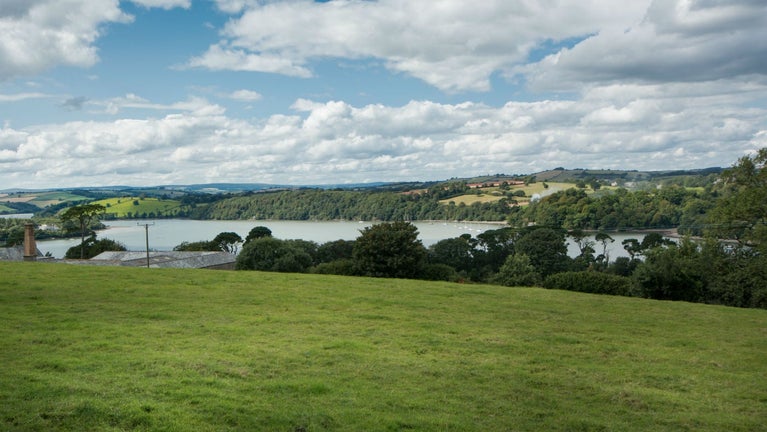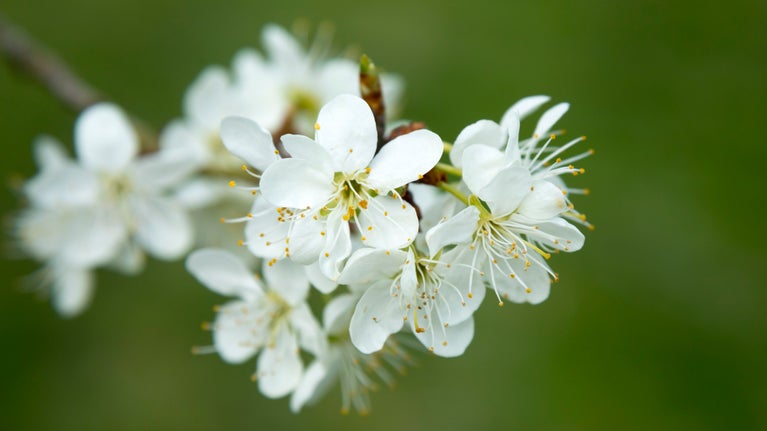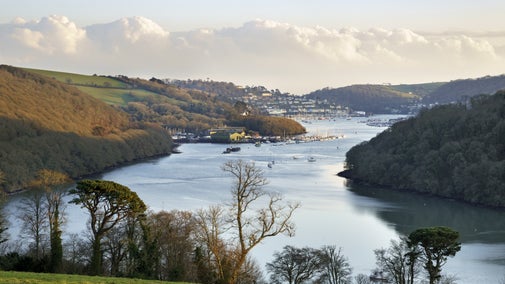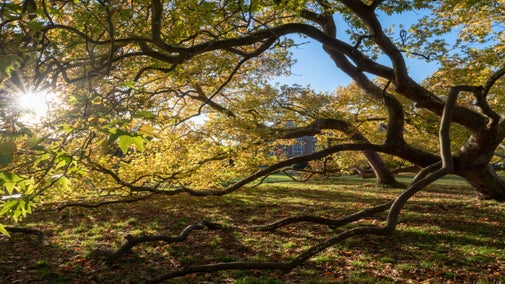
Discover more at Greenway
Find out when Greenway is open, how to get here, the things to see and do and more.

This year we are delighted to be working in partnership with Plymouth and South Devon Community Forest, and with grant funding from Defra’s Trees for Climate fund we’ll create, restore and connect around eight hectares of new wooded habitats on the Greenway estate, to include a combination of deciduous woodland, wood pasture and parkland.
‘Bigger, better and more joined up’ is our mantra, and since 2015, the English Riviera portfolio (which includes Bradley, Coleton Fishacre, Compton Castle and Greenway) has been working to meet the aims of the National Trust’s Land, Outdoors and Nature strategy; creating and restoring priority habitats, ensuring nature recovery and improving biodiversity, carbon sequestration and natural flood management.
At Greenway we've planted nearly 3,000 trees and significantly added to the landscape with a mosaic of new habitats from parklands trees to wood pasture and deciduous woodland. Our aim is to bring as much life to these wooded habitats as possible, so as they grow and develop, expect spectactular blossom and fruit displays which will provide habitats and food for wildlife for much of the year.

In the woodlands there'll be a variety of broadleaved trees such as english and sessile oak, hornbeam, beech, yew, small leaved lime, scots pine, sweet chestnut and wild cherry will be found. Towards the edges of the woodland you'll find field maple, hazel, hawthorn, blackthorn, spindle and holly, which will provide shelter and food for a variety of fauna. In the wood pasture there'll be a mix of these alongside the local Dittisham plum (or Dittisham ploughman), crab apples and conference pear.
Lastly, in the parkland we've planted a few example of non-native trees that have shown to grow well in the UK without becoming invasive or a source of disease, such as red oak, tulip and black walnut. This will sit alongside naturalised species like the common walnut and locally abundant Monterey cypress whose size may attract prominent nesting opportunities for osprey in years to come.

By aiming for a diversity of species, fringed by flowering and fruiting trees and significant open areas, we can create wooded habitats used by a wide range of wildlfe. The transitional areas between open grassland, shrubby woodland edges and high canopy woods should teem with life in years to come and provide a rich source for wldlife to thrive.
Aside from the positive climate impact of introducing more trees and plants, the project will have several other valuable outcomes, including:
We can all play our part to help to create new habitats and take climate action. Whether it’s a window box or a bird box, a small wildlife pond or bug hotel, why not see where you could make some space for nature around your garden.

Find out when Greenway is open, how to get here, the things to see and do and more.

The Plymouth and South Devon Community Forest will stretch across different parts of the city and surrounding countryside. It will be a mix of community woodland, private woodland, on street trees, urban woodland, wooded habitat corridors and hedgerows.
With countryside views over woodlands, traditional farmland and the winding Dart Estuary, the estate at Greenway is a rich mosaic of habitats. Discover more about a new project that has been established to improve areas of the countryside for nature.

From walled gardens to riverside woodland, the garden at Greenway is very relaxed and tranquil. Find out more about the Peach House, the Fernery, the Battery, and where to find the best river views.

Greenway is a three pawprint rated place. We love dogs and welcome you to visit with yours. Find out where you can walk with your dog at Greenway and what facilities are available.

Trees provide vital habitats for a range of wildlife and are one of the best natural defences against climate change. This is why we're aiming to plant and establish 20 million trees by 2030. Donate to Plant a Tree and make a difference.

Discover the world of trees and plants across the 25,000 hectares of woodland, 135 landscape sites and more than 200 gardens in National Trust care.
